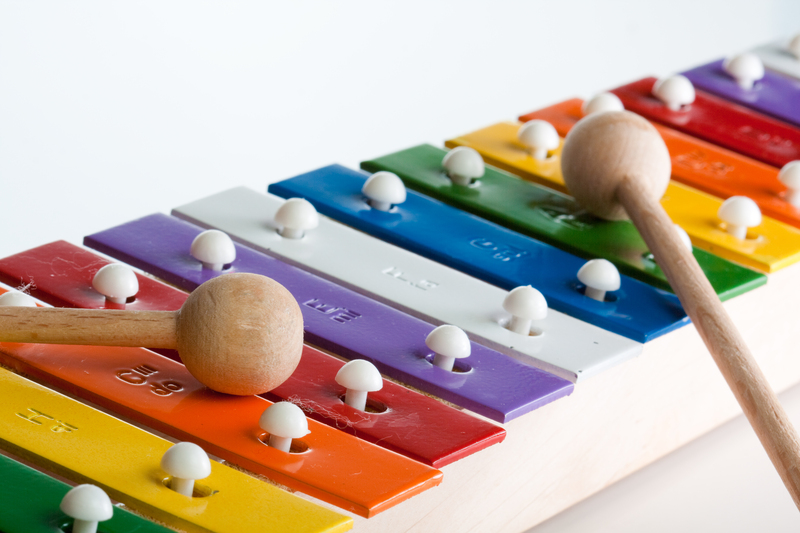From Broken to Beautiful: Upcycling Strategies for Modern Eco-Friendly Homes
Upcycling has rapidly become a central trend in the world of modern, eco-conscious living. Instead of discarding items that are damaged, outdated, or seemingly useless, many homeowners are embracing upcycling as a means to create unique, environmentally friendly homes. From broken to beautiful, the art of upcycling is about reimagining, reinventing, and rejuvenating objects, injecting fresh creativity and sustainability into your living space.
In this comprehensive guide, we'll explore a variety of upcycling strategies for eco-friendly homes. We'll cover practical tips, inspiring ideas, and expert advice to help you transform your home while reducing waste and your environmental footprint.
What is Upcycling?
Upcycling is the process of taking discarded, broken, or unwanted items and transforming them into new products of higher value or aesthetic appeal. Unlike recycling, which breaks down materials into basic components, upcycling focuses on creative reuse, preserving the original item's structure when possible.
The Difference Between Upcycling and Recycling
- Recycling: Breaks down objects into raw materials, which are then remanufactured into new products.
- Upcycling: Reuses objects in their existing form, creatively altering them to serve a new purpose or enhance their aesthetic.
By implementing upcycling strategies in your home, you can reduce landfill waste, express your individuality, and enjoy a more sustainable lifestyle.

Why Upcycle? The Benefits for Modern Eco-Friendly Homes
1. Environmental Impact
Every year, millions of tons of furniture, decor, and building materials end up in landfills. By upcycling, you're actively contributing to waste reduction and resource conservation. This approach helps lower greenhouse gas emissions, reduces demand for new materials, and preserves precious natural resources.
2. Unique, Personalized Aesthetic
Upcycling opens up opportunities to create one-of-a-kind pieces that reflect your style and personality. Old doors become custom dining tables, forgotten jars transform into elegant lighting, and worn textiles breathe new life as eclectic cushion covers.
3. Budget-Friendly Solutions
Renovating and decorating with new items can be expensive. Upcycling allows for striking home transformations at a fraction of the cost, making sustainable design accessible to everyone.
4. DIY Satisfaction
Embracing upcycling means you gain practical skills and experience a deep sense of accomplishment. The ability to turn the old and broken into the beautiful is not only eco-friendly but also personally rewarding.
Essential Upcycling Strategies for Contemporary Green Homes
1. Assess and Sift
Start by evaluating items you already own. Walk through your home and list belongings that are outdated, damaged, or unused. Take a fresh look--sometimes, all it takes is a shift in perspective to see the potential in a piece of furniture or decor.
- Tip: Create three piles: Upcycle, Donate, and Dispose. Commit to upcycling at least 50% of what you declutter.
2. Plan and Design
Before diving into DIY projects, visualize the end result. Search for inspiration on platforms like Pinterest, Instagram, or upcycling blogs. Sketch your ideas and make a list of the tools and materials you'll need.
- Common upcycling supplies: Sandpaper, non-toxic paints, sustainable adhesives, hand tools, and eco-friendly finishes.
3. Use Non-Toxic, Sustainable Materials
Choose materials and finishes that are kind to the planet and your family's health. Water-based paints, natural wood oils, recycled fabrics, and second-hand purchases should be prioritized to keep your upcycling eco-friendly.
- Look for certifications such as FSC for wood or OEKO-TEX for textiles.
Furniture Upcycling: Breathing New Life Into Old Pieces
Eco-home upcycling often starts with furniture. Furniture is durable, versatile, and offers endless creative opportunities. Here are some innovative furniture upcycling strategies:
Transforming Tables and Chairs
- Paint and Stain: Give dated wooden chairs and tables a chic modern look with bold, non-toxic paint or stains.
- Decoupage: Use vintage newspapers, sheet music, or botanical prints for a unique, artful finish.
- Repurpose: Turn an old door into a statement dining table, or transform broken chairs into stylish plant stands.
Reimagining Storage Solutions
- Dresser Makeovers: Remove drawers to create open shelving; use bold colors or hardware for dramatic effect.
- Bookshelf Revival: Combine mismatched shelves for a custom wall unit, adding casters for mobility.
- Crate Creations: Stack old fruit crates to build modular storage that's both practical and fashionable.
Home Decor Upcycling Ideas for a Greener Space
Home decor is the small detail that completes any space. With creative upcycling, you can achieve both beauty and sustainability:
Lighting Solutions
- Bottle Lamps: Reuse glass bottles or jars as pendant lights or table lamps by adding basic wiring kits.
- Colander Chandeliers: Turn vintage metal colanders into quirky, industrial-inspired light fixtures.
- Mason Jar Sconces: Mount jars to wood planks for rustic wall lights.
Wall Art Revamps
- Textile Art: Frame scraps of patterned fabric or weave leftover yarn and twine onto empty frames.
- Upcycled Mirrors: Use reclaimed wood, bike tires, or even old window frames to create unique mirror borders.
- Collage Walls: Assemble vintage postcards, broken jewelry, and recycled materials for a sensory gallery wall.
Green Upcycling: Incorporating Nature
- Planters Galore: Convert teacups, boots, or tin cans into whimsical plant pots.
- Vertical Gardens: Arrange old pallets, shoe organizers, or gutter sections on walls for lush, space-saving gardens.
- Terrariums: Use old glass containers to create closed-ecosystem plant displays.
Sustainable Building and Renovation Upcycling
Upcycling can go well beyond decor--in fact, it's transforming the way homes are renovated and constructed:
Reclaimed Materials
- Wood: Salvaged barn wood, pallets, and floorboards can become accent walls, beams, or even countertops.
- Bricks and Tiles: Rescue old bricks or patterned tiles for backsplashes, garden paths, or fire pits.
- Windows and Doors: Incorporate antique window frames as room dividers or use doors as headboards.
Creative Architectural Features
- Glass Bottle Walls: Lay bottles sideways in mortar for colorful, light-catching room dividers.
- Tin Ceiling Tiles: Reuse vintage tiles for dramatic backsplash or wall accents.
- Industrial Reuse: Old plumbing pipes become bookshelves or curtain rods, while ladders transform into kitchen pot racks.
Tips for Successfully Upcycling at Home
The journey from broken to beautiful requires vision, patience, and some practical know-how. Follow these tips to ensure success:
- Start Small: Begin with a simple project to gain confidence and experience.
- Invest in Quality Tools: Good tools improve safety and quality. Borrow, buy secondhand, or share with neighbors to keep things sustainable.
- Learn Basic Skills: Online tutorials and local workshops can teach you essential techniques like sanding, repairing joints, or wiring lights.
- Embrace Imperfections: Small flaws add character and authenticity to your upcycled items.
- Stay Safe: Use eco-friendly materials, wear protective gear, and be mindful of old finishes that may contain harmful substances.
Inspiring Real-Life Upcycling Success Stories
To help motivate your own journey from broken to beautiful, consider these inspiring eco-home upcycling projects:
The Pallet Patio Paradise
One eco-conscious family transformed discarded pallets from a local warehouse into a stunning outdoor patio set. With a little sanding, paint, and weather-resistant cushions, the result was a comfortable, stylish seating area that cost less than $100 and saved valuable materials from the landfill.
The Vintage Door Bookshelf
An old, broken door destined for the dump became a show-stopping bookshelf with character and history. By adding reclaimed wooden shelves and a fresh coat of eco-friendly paint, the homeowner created a functional piece that's also a work of art.
Junkyard Kitchen Island
Creative thinkers sourced a battered metal tool chest from a salvage yard, added wooden panels and casters, and converted it into a kitchen island with ample storage. It's conversation piece that's both sustainable and practical.
Upcycling and the Eco-Conscious Community
Upcycling's growth is fueled by an active, supportive community. Online forums, local workshops, and non-profit organizations are eager to share resources, host swap events, and exchange ideas. Get involved to find inspiration, troubleshoot your projects, and build lasting relationships with like-minded individuals.
- Tip: Look for "buy nothing" local groups or neighborhood sharing platforms to source items for your next upcycling adventure and reduce your carbon footprint even more.

Frequently Asked Questions about Upcycling for Eco-Friendly Homes
Is upcycling better than traditional recycling?
Upcycling and recycling both have environmental benefits, but upcycling generally has a lower carbon footprint since it preserves more of the original item and reduces the energy needed to break down and remanufacture materials. Upcycling also offers creative, one-of-a-kind results that recycling cannot.
Can upcycled items be as durable as new ones?
With quality materials and careful workmanship, upcycled furniture and decor can be just as--if not more--durable than mass-produced items. Many older materials, such as hardwood, are often superior to what's available today.
Do upcycled projects add value to a home?
Yes! Unique, well-crafted upcycled features can make your home stand out in the market. Buyers are increasingly drawn to authenticity, sustainability, and visually interesting spaces.
Conclusion: Transform Your Home, Transform the Future
Upcycling is more than a trend--it's a movement that empowers homeowners to create bold, eco-friendly homes while minimizing their environmental impact. Whether you're refurbishing furniture, creating art from discarded materials, or giving architectural salvage a new lease on life, the potential to turn the broken into the beautiful is limited only by your imagination.
Ready to start your upcycling journey? Start small, stay curious, and celebrate each success. With each project, you're not just building a beautiful contemporary green home--you're contributing to a more sustainable world for future generations.
Discover More Upcycling Inspiration!
- Looking for upcycling tips? Join online communities and local workshops on sustainable home transformation.
- Share your projects on social media using hashtags like #UpcycleHome and #EcoFriendlyDecor.
- Stay up to date with trends and new techniques--there's always something exciting happening in the upcycling world!
From broken to beautiful, your eco-friendly home is just a creative idea away. Start upcycling today!
